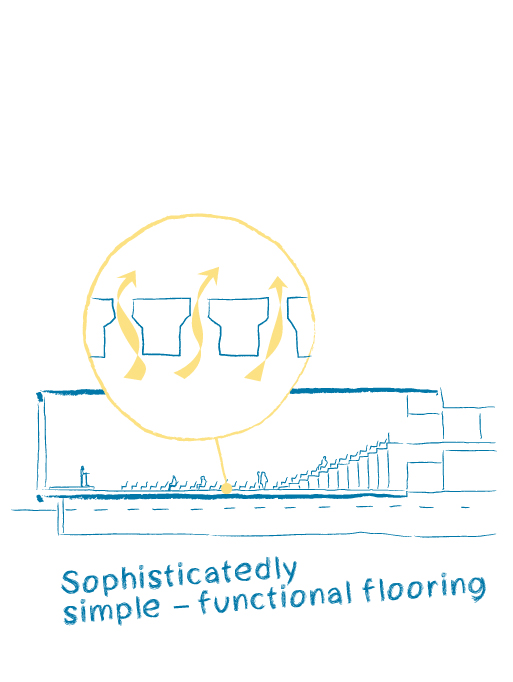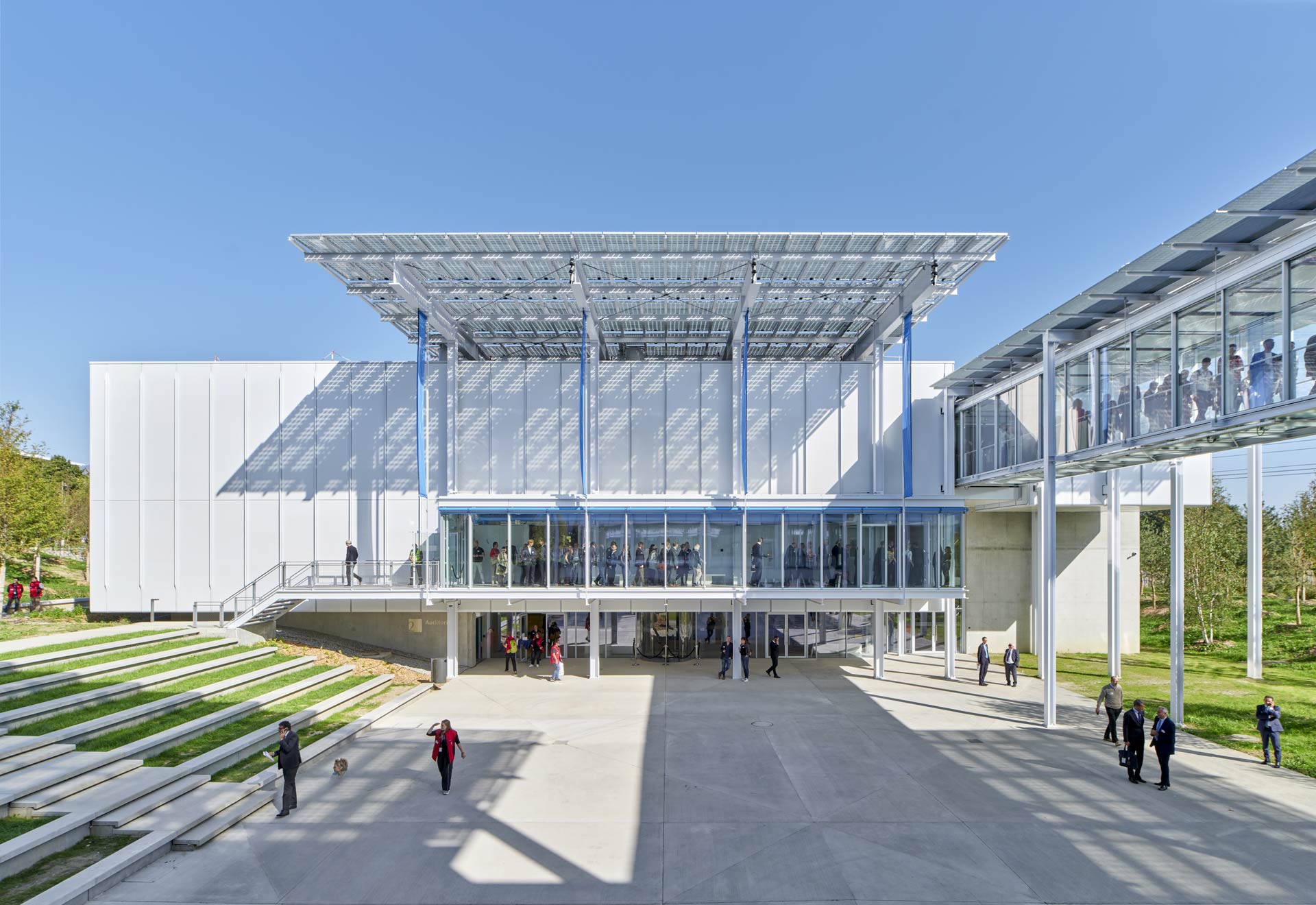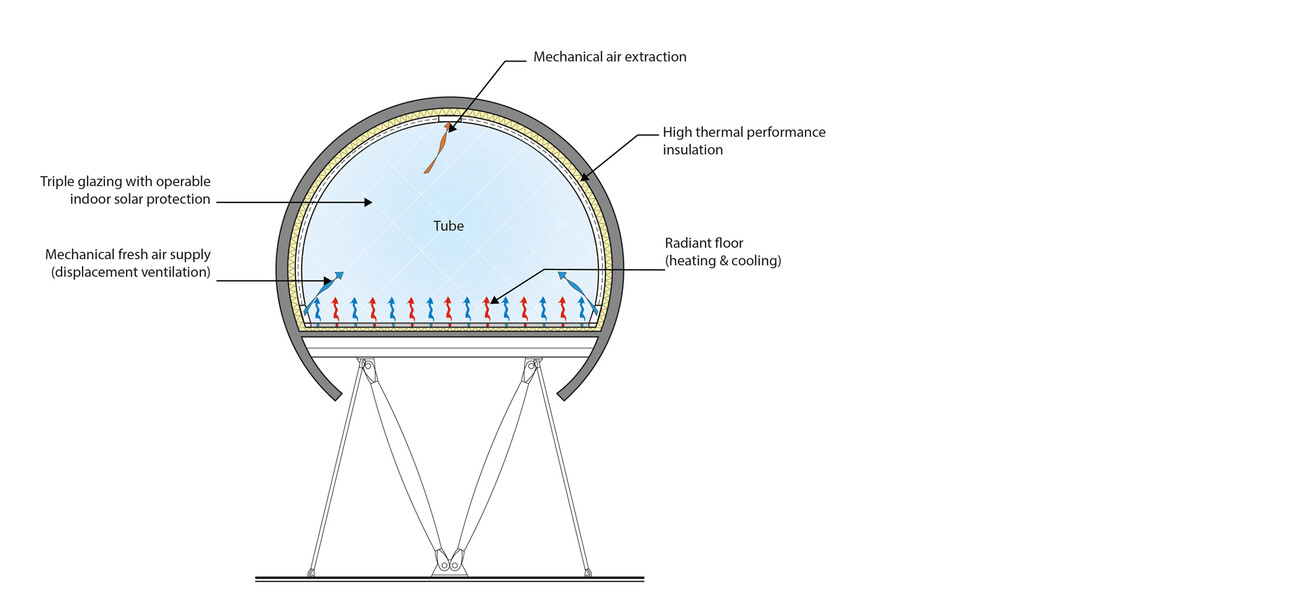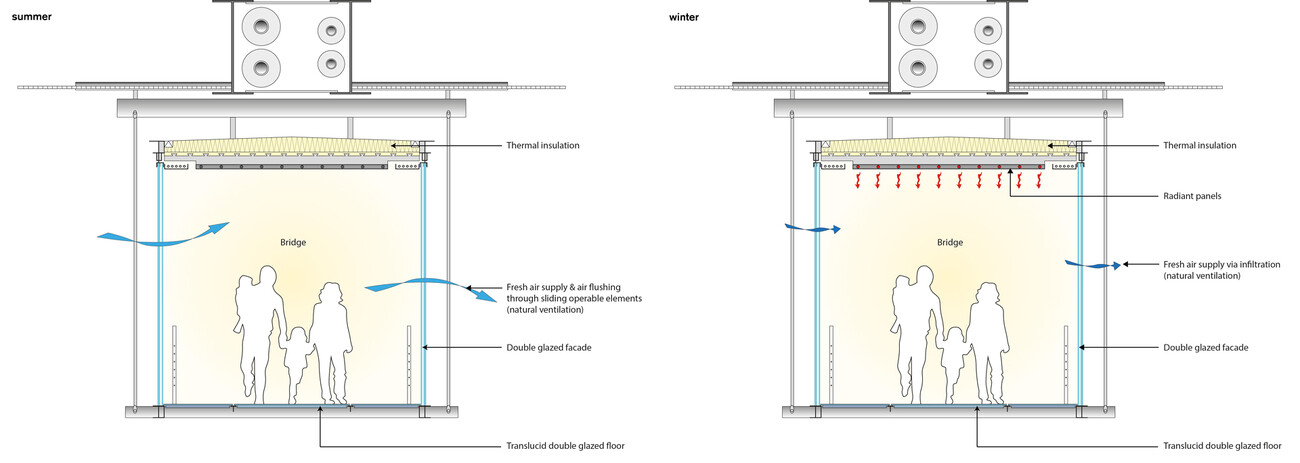CERN Science Gateway, Geneva, Switzerland


Commissioned by the European Organization for Nuclear Research (CERN), the Science Gateway is a facility aiming to educate and engage the public in science and CERN activities and inspire new generations with the beauty of science.
The building offers a variety of spaces and activities from exhibitions to conferences housed in six buildings: Four “Pavilions” and two “Tubes” inspired from the CERN’s Large Hadron Collider (LHC), world’s largest particle accelerator. Each building is linked to its building neighbour by a glazed bridge.
Transsolar developed concepts for comfort and low energy and Carbon footprint with passive and active solutions. All spaces except the auditorium are conditioned by radiant surfaces and mechanically ventilated through displacement ventilation, ensuring high indoor air quality and thermal comfort with minimal energy demand.
All facades are insulated using performant thermal insulation and triple glazing equipped with external operable solar protection. Only the bridges are an exception; they are double-glazed and protected from the sun by large overhangs, being passively ventilated, cooled, and heated. They rely solely on passive measures for climate control, except in extreme cold, when low-temperature radiant panels are used for heating.
The auditorium is designed for flexibility of use. With a maximum capacity of 900 people, it can be divided into three smaller auditoriums for simultaneous use and is equipped with a retractable stand. The need for flexibility requires a conditioning concept that remains invisible while maintaining optimal comfort conditions: A tailor-made solution was developed for the ventilation of the spaces. This concept is based on a full air system, which means that fresh air supply, heating and cooling are supported by mechanical ventilation and responds to a displacement ventilation concept. Fresh air is supplied in a ducted plenum under the floor and then exhausted into the auditorium through micro-perforations in the floor. Each micro-perforation is 4mm in diameter and 16mm apart. The air is exhausted under the ceiling at three distinct positions. This concept was validated by two computational fluid dynamic simulations. The first one was to ensure air velocity escaping from the micro perforations of the floor does not jeopardize aeraulic comfort, as a draft at the ankles is never pleasant. The second was to assess the thermal comfort in the auditorium through air stratification considering the ventilation concept and the thermal loads (lighting, scenography lighting, audience).
In addition, each room of the Science Gateway was analyzed through dynamic thermal simulations to ensure that the thermal comfort meets the requirements, while at the same time assessing the energy demand at building level. This led to design an energy supply concept mainly based on renewable energies: vertical geothermal probes to provide heating and cooling and photovoltaic panels to supply electricity. However, the geothermal probes had to be abandoned during construction for geotechnical reasons and the system replaced by a high-efficiency air-water heat pump.
A photovoltaic canopy, made up of 620 modules, hovers above each pavilion. In total, this represents a photovoltaic area of 3,720 m² / 40,042 ft², producing 493 MWh of electricity – 100 MWh more than the project's consumption – making the Science Gateway carbon neutral in operation and complying with the "THPE 2000 W" level of Geneva's very stringent energy regulation.








